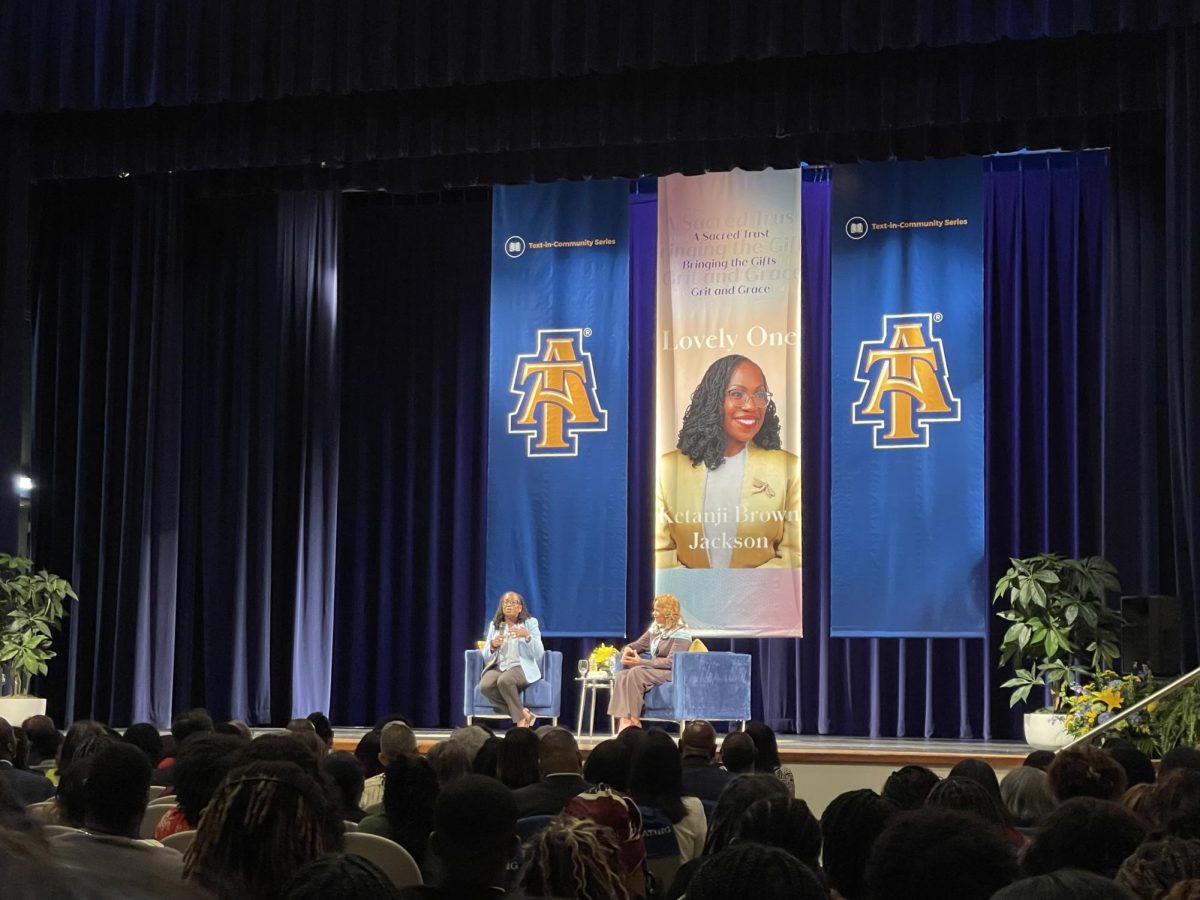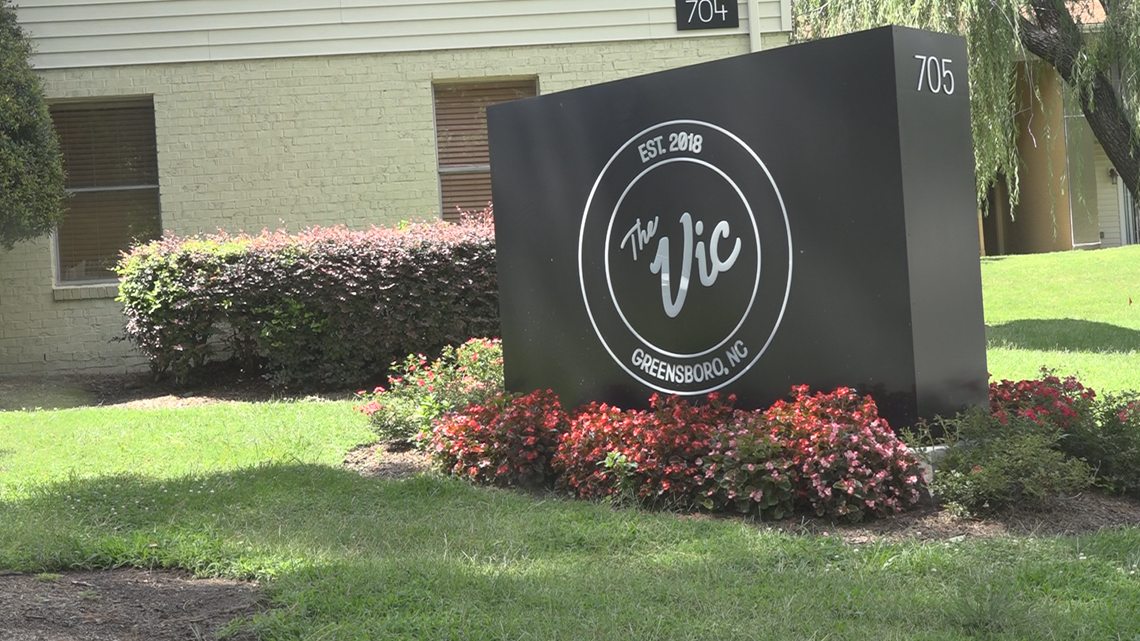On Tuesday, Feb. 6th, N.C. A&T students of all disciplines gathered in the Dudley Memorial Building to view “Homage,” the traveling Black History Museum.
The museum tour was led by private collections owners Nia and Morris McAdoo, who’ve been piecing the exhibit together for over 20 years.
“Our history is constantly being challenged, erased, and retold. So, to have a collection owned by Black folks that we can share with Black students is really important,” said Nia McAdoo.
Ultimately, the exhibit is a visual timeline that illustrates important moments in African American history, beginning with slavery and concluding with Barack Obama’s election.
The McAdoos went into great detail about the history and acquisition of each piece, leaving the audience in utter shock after each explanation. One piece that stood out to the crowd was the slave transport collar displayed in the gallery’s center.
As explained by Nia McAdoo, the slave transport collar was a gimmick enslavers used to embarrass and locate individuals who’d unsuccessfully tried to escape bondage. The collar is heavy as it is made entirely of metal and secured with a lock.
Additionally, the collar had three bells circling the bearer’s neck, placed there to alert overseers of the bearer’s every move.
According to the audiences’ reaction, the most exciting aspect of the piece was that the McAdoos had acquired it during a privatized Confederate artifact auction during the pandemic.
Although the slave transport collar was the first piece introduced, the timeline began with significant documents from Charleston, South Carolina, a city infamous for having one of the largest populations of enslaved Africans.
Displayed in that section was a newsletter from the “Charleston Courier,” runaway slave advertisements, and documents from Macon Bolling Allen, the first Black lawyer in the U.S.
The McAdoos honed in on the dehumanizing language used in the newspaper and advertisements, emphasizing the fact that enslaved individuals were considered property instead of human beings.
Further down the timeline, images of Thurgood Marshall, Daisy Bates, and the “Little Rock Nine” during the U.S. Court of Appeals hearing on the Little Rock, AR, school integration case wowed visitors.
In addition to the Black and White images of Marshall and Bates, there was an in-color cover of “Life Magazine” titled “U.S. Troops Take Over In Arkansas,” clearly explaining the severity of the Little Rock Nine’s case.
“Many people forget that the struggle for civil rights began far before the 60s and Dr. King. These images reflect that,” said India Brunson, a second-year biology student.
To continue to highlight the legacy of the Civil Rights Movement, the museum showed many images of Shirley Chisolm, the first Black woman to run for President, the legendary Malcolm X, and even a letter signed by Coretta Scott King, in which she vowed to continue Dr. King’s legacy.
The timeline ended with a colorful and triumphant piece made of wood, where Black individuals can be seen holding signs with hopeful messages such as “Change Has Come.” The piece embodies the attitudes of many Black Americans during Obama’s inauguration.
A separate gallery upstairs had many more contemporary pieces that reflected current socio-political issues, like removing critical race theory from school curriculums and depicting Black men in the media.
Associate professor and director of A&T’s visual arts program, Roy Carter, said he deeply enjoyed the contemporary gallery and “hopes that young artists don’t shy away from collecting as well as creating.”
Overall, the “Homage Exhibit” made Black History accessible to N.C. A&T students in a dynamic way.
To learn more about the exhibit, visit their website.






